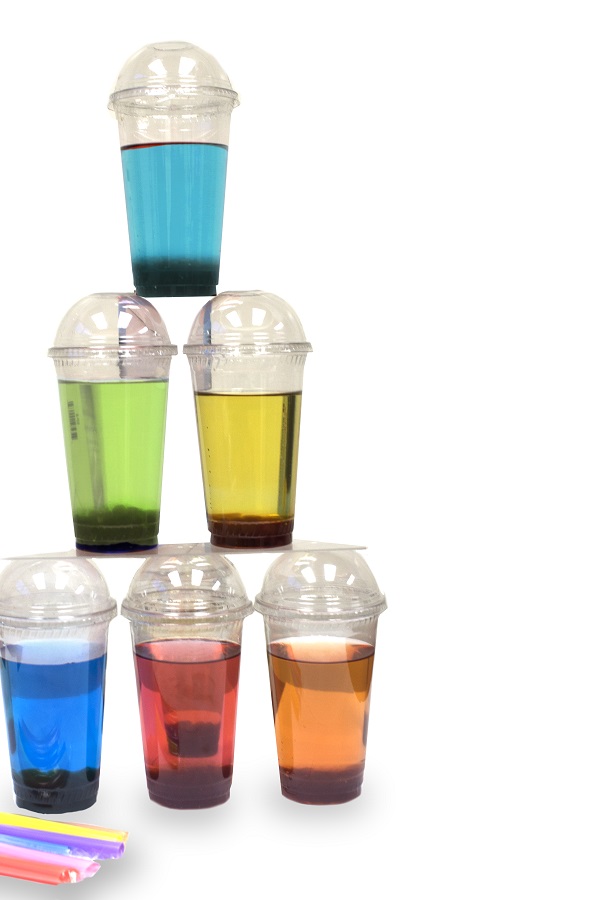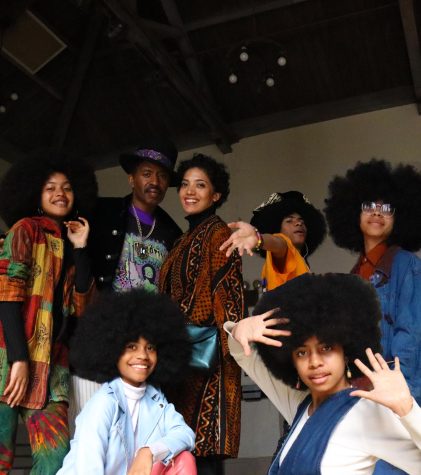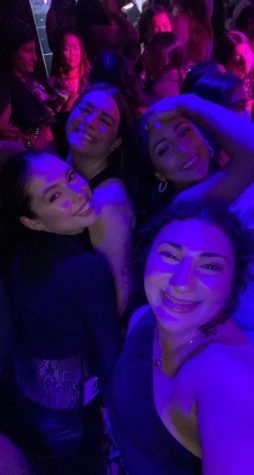Boba Empire
It’s been a long day. You order an iced tea. At the bottom of your cup are a bunch of black, squishy, slimy balls. Mmm… While not aesthetically pleasing, boba has exploded in popularity in the last few years and has allowed a part of Taiwanese culture to grow here in the U.S.
History
Boba is a drink of many names. It can be called bubble tea, pearl tea, boba nai cha, foam milk tea, momi milk tea and QQ.
More commonly known as boba, bubble tea is a Taiwanese iced tea or juice-based drink that is sometimes made with milk or fruit syrup and gets its name from its key ingredient: tapioca pearls. Hong Kong residents popularized the drink’s nickname by calling it boba, which refers to the round shape of the tapioca.
While the tapioca pearl’s appearance looks strange and mysterious, their origins are pretty ordinary. Boba is a starch made from the cassava root. It can usually be found already formed into balls and dehydrated and must be boiled to achieve its ideal consistency: chewy on the outside and soft in the middle.
Created in the 1980s, the drink is thought to have been created when the Product Development Manager for the Chun Shui Tang Teahouse, Lin Hsiu Hui, added fen yuan, a Taiwanese tapioca pudding to her iced tea. While it’s not a new technique to create something great from two already good food items, Hui combined the element of chewing something with a beverage, which is unusual.
What’s boba like?
The look and texture of the tapioca pearls in a drink can be off-putting at first. It can be hard to make it seem like an appealing drink to someone who has never experienced anything like it. But Boba Guys founders Bin Chen and Andrew Chau were quoted by Quartz Media as saying that the experience of having boba is “like drinking with gummy bears.”. Co-owner of Boba Dude in Half Moon Bay, Derek Chen (no relation to Bin Chen), describes boba as being like a ”tea drink from Starbucks with jelly on the bottom”.
What should I get?
For first timers, milk tea is a great option for your first boba. Part of what makes milk tea a great choice is that every boba shop has one, but every milk tea is unique to that establishment. Think of it like ordering the house coffee at a cafe. For fruit teas, honeydew is the reigning favorite at boba places.
With numerous variations of the drink, it would be hard not to find something you’d like. Boba can be made with a fruit tea or milk tea. Fruit flavors offered at boba shops range from ordinary (strawberry, coconut, peach) to unique (kumquat, pomelo, taro). For the lactose intolerant, milk teas can usually be made with soy or almond milk upon request.
Counter-intuitively called toppings, but most often wind up on the bottom of one’s cup are boba (tapioca pearls), popping boba (balls of fruit-flavored syrup wrapped in a thin outer layer), and jellies (small, agar-like shapes with flavors ranging from grass to mango).
Many boba establishments offer customers the option of having their drink hot or iced, as well as giving customers control over the level of sweetness in their drink.
What makes good boba?
Elise Fretz, a San Francisco resident, thinks the best boba is “not too sweet, [has] good quality tea, and the perfect amount of chewy boba.”
Nagisa Yamaguchi, an employee at Eggettes in Millbrae, says good boba comes from rich ingredients.
“Good tea and sugar,” Chen says. “Good tea is important.”
Popularity
Outwardly, the tapioca pearls don’t make the drink pleasing to the eye. But as boba becomes more popular, the strange appearance and texture of the drink becomes more normalized.
As a testament to the power of social media, Sylas Dart, a College Park High School student, said he wanted to try boba after seeing it on YouTube and vlog channels. However, these Creators aren’t the only ones with influence. Abigail Brooks, also a College Park High School student, said she started drinking boba because her friend was into it and made her try it. A convert to the boba industry, Brooks describes boba as “better than sex.”
In Asian communities, boba is a very popular snack time drink. Dale Grande, a Baypoint High School senior says “it’s kind of like an Asian instinct to like boba.”
Yamaguchi attributes the drink’s popularity to “the uniqueness of chewing something while drinking.”
With so many boba places popping up, there is something for everyone. Some boba places like i-Tea in San Francisco have a large menu where you can customize the flavors, sweetness, amount of ice and other jelly toppings to your heart’s content. Others like Plentea have a set menu where they don’t allow substitutions, which is perfect if you’re a purist.
If you want to grab and go, Boba Guys may be for you. Although, their popularity means you’ll have to wait in line. Their customer service is great, as evident from their Yelp reviews and they’ll have you in and out in no time. If you’d prefer to sit down and hang out with friends while sipping your boba, T4 in Millbrae may be more your style. They have numerous tables and a bookshelf full of games, making it a perfect place to relax. If you’re a night owl and get late-night boba cravings, Onyx in Daly City is open until 11 p.m. on most nights.
Achieving Longevity
An alternative to the behemoth coffee drinking culture that permeates daily American life, boba may just seem like the next stop in millennials’ dessert obsession. But that may be underestimating the drink’s versatility. The Tea Association of America reports that tea is “the only beverage commonly served hot or iced, anytime, anywhere, for any occasion.” The drink has the potential to outlast its trendy status by utilizing social media, having a socially conscious mission, diversifying their menu and franchising.
It doesn’t hurt that millennials and Generation Z are increasingly tied into social media, which acts as a conduit through which much of popular culture is formed and spread. Some boba places are taking advantage of this and are trying to appeal to these younger consumers by making their drinks as aesthetically pleasing as possible.
Carefully crafting their Instagram feeds, younger people may be attracted to Mini Monster in Anaheim, which serves their boba in containers that look like giant light bulbs with cotton candy on top. Roasting Waters, a Southern California boba shop, serves their drinks in tall cylindrical jars with beautiful illustrations and cork tops. Meanwhile, Boba Dude in Half Moon Bay has straws that change colors with the temperature.
Adolescents, which are the target demographic for boba, are also increasingly socially conscious. Boba Dude offers a book club to get young kids to read. They have a small bookcase in the store and if a student reads a book and writes a report on it for school, they offer a $10 gift card as a reward. Plentea appeals to the ecological concerns of the younger generations and have created a business opportunity out of it. They offer their drinks in jars which if brought back, can be used for a 10 percent discount off of any of their drinks.
Boba places are also diversifying their menu in order to outlast a boba trend. They are beginning to sell snack foods like popcorn chicken, in addition to their many tea drinks. Some boba places like Boba 7 in downtown Los Angeles are experimenting with boba cocktails. And others are hoping to attract customers by combining cultures. Many boba places are serving flavors like horchata, which originated in Spain, taro which hails from Southeast Asia and India, ube from the Philippines and Thai tea from Thailand.
Large companies like Coldstone Creamery are hopping on the fad by offering franchises the option of selling boba in their stores. The Turlock and Modesto stores have done extremely well, averaging about 1,200 to 1,500 bobas per week.
Stores like Cha Time, Quickly, and Tpumps are spreading boba culture throughout the U.S. by setting up in mall food courts and popular shopping areas where they get the most exposure. Smaller boba shops get repeat customers by utilizing a punch card where after the 10th drink, the customer gets one free. And other stores like T4 get customers by offering a 15 percent discount if a student I.D. is shown and have a week day happy hour discount.
Chen says in order for boba to achieve longevity, shops need to “constantly release new items to attract attention.” Erwin Agnes, a cashier from Tea World, believes that boba won’t ever disappear because “it’s too popular for its sugar content.”
Boba will undoubtedly evolve with the market to satisfy a progressive palate.








